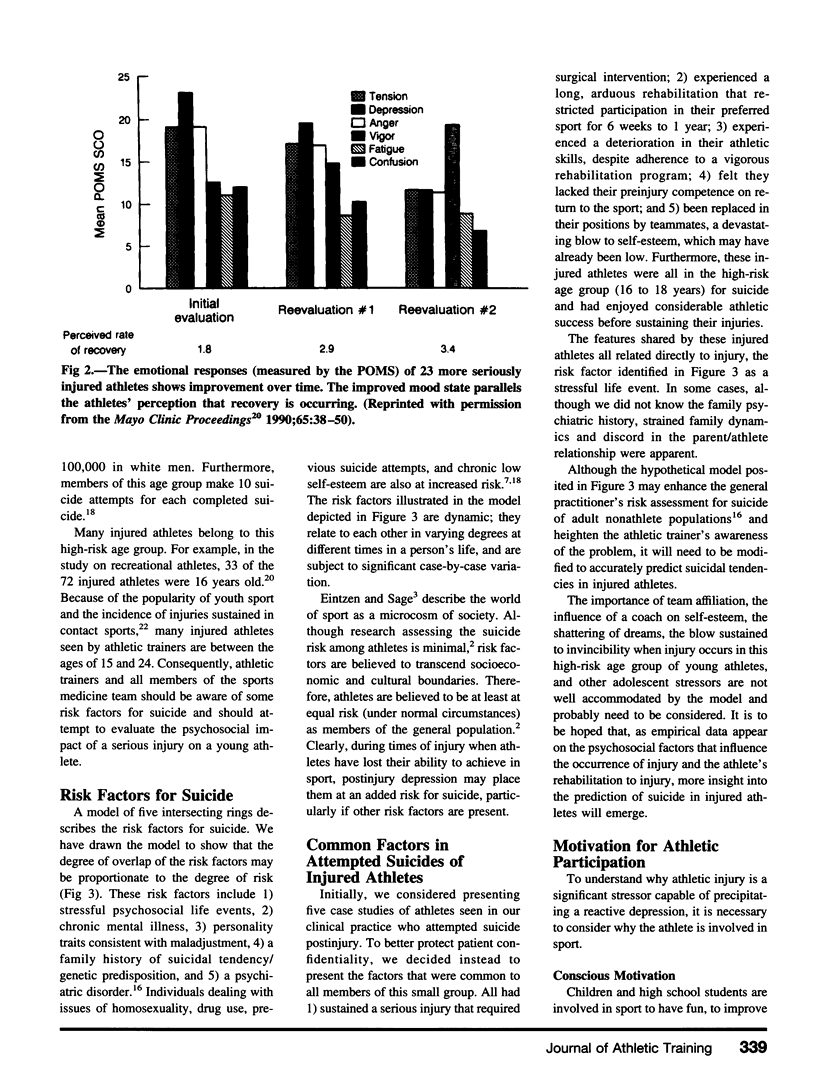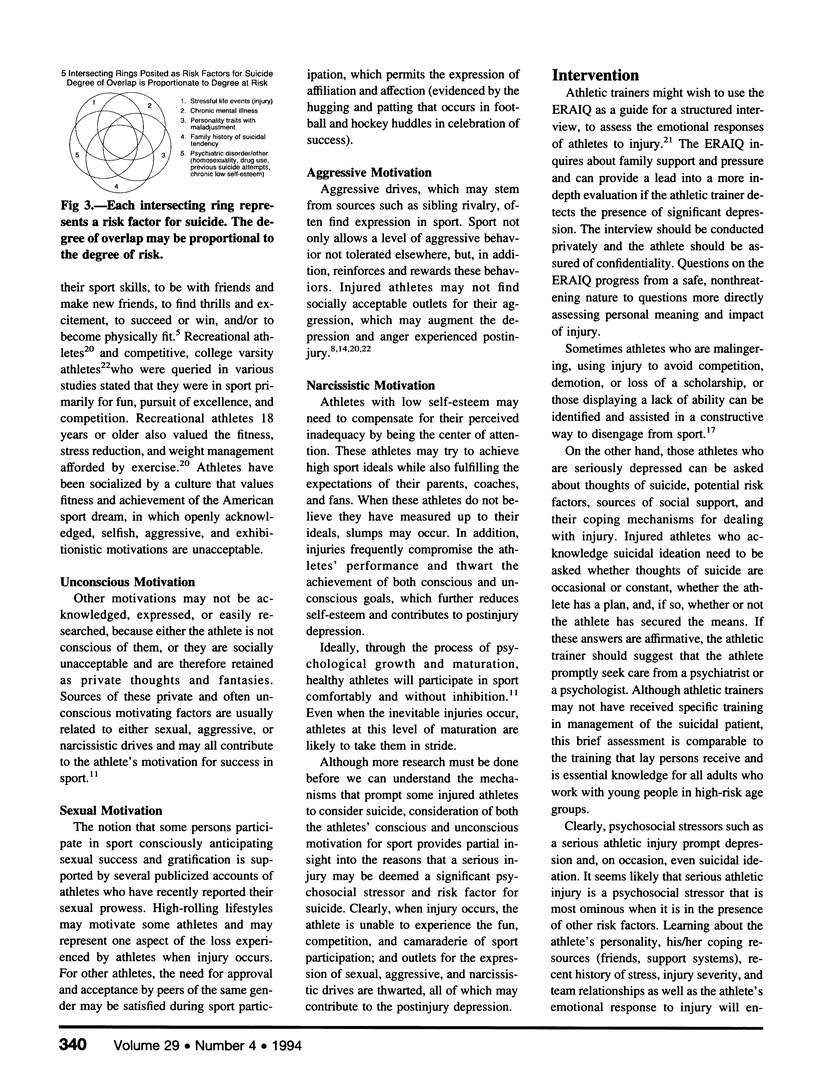Abstract
Research on the emotional responses of athletes to injury shows significant depression that may be profound and may last a month or more, paralleling the athlete's perceived recovery. Injured athletes cared for by athletic trainers are often between the ages of 15 to 24, the high-risk age group for suicide, which is currently a leading cause of death for young Americans. The purposes of this paper are to discuss postinjury depression, the incidence and risk factors of suicide, athletic injury as a psychosocial risk factor, the features common to suicide attempts in case studies of five injured athletes, and the motivation of athletes for sport participation. We also suggest ways in which athletic trainers can assess injured athletes for depression and risk of suicide. The five injured athletes who attempted suicide shared several common factors. All had experienced 1) considerable success before sustaining injury; 2) a serious injury requiring surgery; 3) a long, arduous rehabilitation with restriction from their preferred sport; 4) a lack of preinjury competence on return to sport; and 5) being replaced in their positions by teammates. Also, all were in the highrisk age group for suicide. As a primary care provider, the certified athletic trainer is in an ideal position to detect serious postinjury depression and to determine whether the injured athlete is at risk for suicide.
Full text
PDF




Images in this article
Selected References
These references are in PubMed. This may not be the complete list of references from this article.
- Chan C. S., Grossman H. Y. Psychological effects of running loss on consistent runners. Percept Mot Skills. 1988 Jun;66(3):875–883. doi: 10.2466/pms.1988.66.3.875. [DOI] [PubMed] [Google Scholar]
- Kraus J. F., Conroy C. Mortality and morbidity from injuries in sports and recreation. Annu Rev Public Health. 1984;5:163–192. doi: 10.1146/annurev.pu.05.050184.001115. [DOI] [PubMed] [Google Scholar]
- Maris R. The adolescent suicide problem. Suicide Life Threat Behav. 1985 Summer;15(2):91–109. doi: 10.1111/j.1943-278x.1985.tb00644.x. [DOI] [PubMed] [Google Scholar]
- Meeuwisse W. H., Fowler P. J. Frequency and predictability of sports injuries in intercollegiate athletes. Can J Sport Sci. 1988 Mar;13(1):35–42. [PubMed] [Google Scholar]
- Mueller F. O., Cantu R. C. Catastrophic injuries and fatalities in high school and college sports, fall 1982-spring 1988. Med Sci Sports Exerc. 1990 Dec;22(6):737–741. doi: 10.1249/00005768-199012000-00001. [DOI] [PubMed] [Google Scholar]
- Reid D. C., Saboe L. Spine fractures in winter sports. Sports Med. 1989 Jun;7(6):393–399. doi: 10.2165/00007256-198907060-00004. [DOI] [PubMed] [Google Scholar]
- Rudd M. D. The prevalence of suicidal ideation among college students. Suicide Life Threat Behav. 1989 Summer;19(2):173–183. doi: 10.1111/j.1943-278x.1989.tb01031.x. [DOI] [PubMed] [Google Scholar]
- Scott S. G. Current concepts in the rehabilitation of the injured athlete. Mayo Clin Proc. 1984 Feb;59(2):83–90. doi: 10.1016/s0025-6196(12)60241-9. [DOI] [PubMed] [Google Scholar]
- Smith A. M., Scott S. G., O'Fallon W. M., Young M. L. Emotional responses of athletes to injury. Mayo Clin Proc. 1990 Jan;65(1):38–50. doi: 10.1016/s0025-6196(12)62108-9. [DOI] [PubMed] [Google Scholar]
- Smith A. M., Scott S. G., Wiese D. M. The psychological effects of sports injuries. Coping. Sports Med. 1990 Jun;9(6):352–369. doi: 10.2165/00007256-199009060-00004. [DOI] [PubMed] [Google Scholar]
- Smith A. M., Stuart M. J., Wiese-Bjornstal D. M., Milliner E. K., O'Fallon W. M., Crowson C. S. Competitive athletes: preinjury and postinjury mood state and self-esteem. Mayo Clin Proc. 1993 Oct;68(10):939–947. doi: 10.1016/s0025-6196(12)62265-4. [DOI] [PubMed] [Google Scholar]



